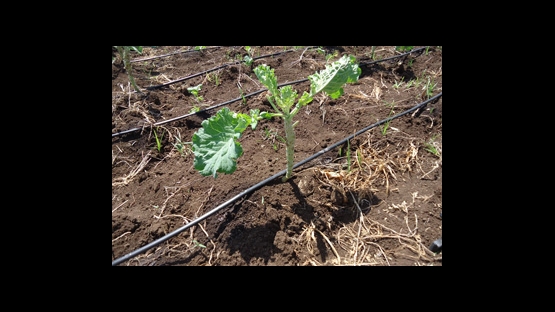Soil is the basis for sustenance for 7 billion people. It preserves clean water and helps regulate the climate. Soil degradation reduces agricultural yields and threatens farmers' livelihoods. Soil that has been leached of its nutrients cannot support crops, or plants that prevent desertification. Healthy soil is essential to ensure a steady supply of food and biodiversity. Soil loss translates into widespread poverty and slower economic development. Yet this indispensable natural resource can be overlooked when policy-makers seek solutions to combat poverty and improve livelihoods. Held every year on 5 December, World Soil Day commemorates the importance of soil for our survival and the need to use it sustainably.
Poor agricultural practices have contributed very heavily to the degradation of cropland worldwide - by 1990, about 38 per cent of all arable land had already been lost. An additional 5 to 6 million hectares of arable land continues to be lost each year. In the past 22 years, this has amounted to an area over twice as large as Germany. One third of the global population lives in drought-prone areas, where climate conditions further amplify land loss problems.
With improved soil management practices, however, soil can be protected and even regenerated. Properly managed soil will hold more rainwater, increasing crop yields and lessening the risk of erosion and polluted run-off that threaten fresh water supplies. To track the movement of water and nutrients through soil, nuclear techniques are invaluable. The movement of isotopes - variants of a chemical element - can be tracked in soils, crops, waters, fertilisers and animal manure to follow the path of water through soil, measure soil erosion, and quantify nutrient and water use by crops.
"In order to combat poverty, improve food security and preserve biodiversity, the IAEA's scientific research and nuclear techniques need to be included in soil and water policies in developing countries. The results need to reach our Member States," says Susanne Nebel, an IAEA expert in building partnerships for the IAEA's Technical Cooperation programme. Policy makers, governments and scientists need to join forces to address effective soil management.
For example, the IAEA has undertaken soil erosion analysis in Kyrgyzstan and Tajikistan that has provided important evidence-based data to support changes to these countries' soil legislation.
The Pamir and Pamir-Alai Mountains in Kyrgyzstan and Tajikistan are one of Central Asia's most significant reservoirs of biodiversity. The wide variety of animals, plants and the purity of the fresh water are unique. However, in the past decades, land degradation has reduced biodiversity, polluted water reserves and impoverished farmers. The governments of both countries understood that they shared problems and started the "Sustainable Land Management in the High Pamir and Pamir-Alai Mountains" initiative, or PALM. This trans-boundary initiative tackles land degradation and poverty simultaneously. This integrative project is led by the United Nations University and the World Overview of Conservation Approaches and Technologies (WOCAT), supported by many specialized agencies, including the IAEA.
The IAEA helped national scientists by taking samples, setting up a laboratory and interpreting data. Alongside the IAEA, national experts assessed the isotopic composition of the soil and determined soil erosion quantities. They could prove that the root causes of soil erosion were inappropriate agricultural practices and irrigation techniques. These practices and techniques could be adapted to reduce soil loss and support sustainable agricultural practices. The project also provided the scientific data needed to support sustainable land use planning and to promote soil and water conservation techniques.
Erosion was reduced by a factor of ten when the new science-based land-use plans were introduced. The amount of soil lost through erosion dropped from 150 tonnes per hectare to less than 15 tonnes per hectare. Using new irrigation methods, the soil could also retain more nutrients such as nitrogen, phosphorus, sulphur and potassium, increasing its fertility.
The IAEA's work in soil achieves the greatest impact through strong partnerships between international organizations, according to Nebel, "The IAEA has the scientific expertise. Other organizations can help Member States translate the scientific results into policy." Nebel sees potential for future collaboration in the new Global Soil Partnership that brings together international, regional and national organizations, working in the area of soil protection and sustainable management. "Getting research results out of the lab and into the national soil and water action plans is part of our effort towards a more meaningful technical cooperation programme in soil and water management," she concluded.


